UHF amplifier 70 cm 430 MHz 440 MHz LDMOS 400W
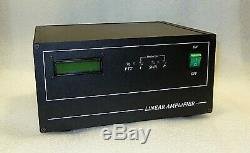
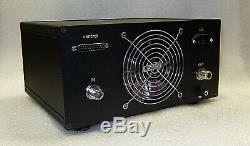
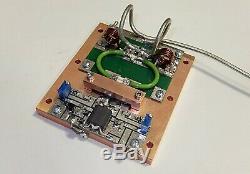
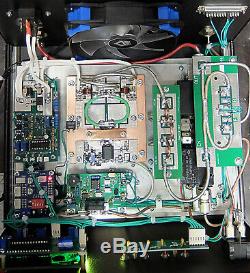
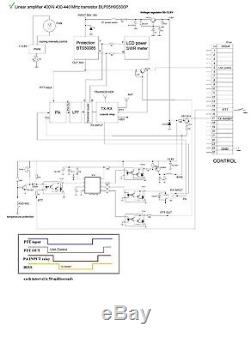
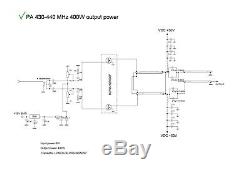
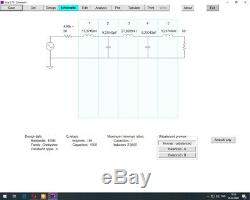



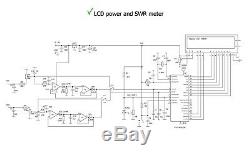


Before using the Power Amplifier, carefully read this manual and other documentation that came with your amplifier. This will allow you to reduce the risk of failure of this product. It is a transistor linear 430-440 MHz power amplifier designed for use with amateur radio stations. Distinctive features of the amplifier. No need to replace components due to wear.
Lack of high voltage in the high-frequency part. The ability to automate operation. For the power amplifier to work properly, you must follow some precautions. The operation of the amplifier without an appropriate electrical grounding system is required. If possible, organize the chassis grounding of the radio-transmitting device, which will ensure the most efficient and stable operation of all the equipment of the amateur station, and will reduce the level of possible interference and RF interference; ground all station equipment to a common ground. If the protection systems of the amplifier are repeatedly activated, it is necessary to stop the operation of the amplifier until the causes of the emergency shutdown are eliminated.
Multiple tripping of protection systems can damage expensive LDMOS transistors. Do not drop, or damage the case, or allow foreign objects inside - this may lead to the failure of the electronic components of the power amplifier. Do not operate the power amplifier with the covers removed to avoid overheating of the device. The absence of covers disrupts the cooling system. Functional Features of the Amplifier.
The built-in potentiometers in the protection circuit and the BIAS voltage control circuit are set to the correct position during setup and testing of the equipment. Any change in the position of these potentiometers will result in the need to reconfigure the amplifier using accurate measuring instruments.
Before operating the power amplifier, it is necessary to connect a load equivalent of 50 ohms, minimum 400 watts or a matched antenna with known low SWR to the output antenna connector. The operation of the amplifier without load negatively affects the operation of the output RF transistors. To obtain an output power of 400 watts, the input power level should be no more than 8 watts. The amplifier is designed for an impedance of 50 ohms. If the antenna-feeder devices are matched to a resistance of 50 Ohms, and the SWR on all operating ranges does not exceed the value of 1.5 to 1, then the amplifier can be operated without additional coordination. If the SWR is greater than 1.5 to 1, then the use of additional matching devices is recommended. In the output stage of the power amplifier, a high-quality LDMOS transistor BLP05H9S500P is used. The process of switching the transmit-receive in the amplifier is provided by coaxial relays controlled by a digital sequencer on the TINY13A microprocessor, which allows you to control an external LNA, as well as control the transceiver by the TX INHBIT command.
The power amplifier is equipped with special high-speed protection circuits. For example, from excess of output power, high value of SWR in the antenna, high drain current of output transistors and overheating. To control the operating parameters of the power amplifier, a digital measuring device is used, on which the output power level and the SWR value are displayed. Types of radiation SSB, CW, DIGI, RTTY ect. Maximum SWR in the antenna 1.5: 1.
Consumption current 15A max (50V each). Input impedance 50 ohm (unbalanced).
Output impedance 50 ohm (unbalanced). Input / output connectors N-type. Amplifier circuit push-pull class AB.
Dimensions - W x H x D (mm) 290x140x205. If the temperature of the transistor case exceeds + 60 ° C, the bimetallic thermal switch located on the transistor case will be triggered and transmission becomes impossible, until it cools down to + 55 ° C.
Protection against exceeding the maximum permissible output power. If the output power level exceeds the permissible threshold, a protection will be activated that disconnects the power from the output transistors. The P LED lights up on the front panel. A power cycle is required to reset the protection. If the SWR in the load exceeds the value of 1.5: 1, then the protection system will trigger. The SWR LED on the front panel lights up. To reset the protection, turn off the power. In case of protection operation, we recommend checking the SWR antenna and feed line. Protection against exceeding the maximum permissible current. If the current value of the output transistors exceeds the permissible threshold, a protection will be activated that disconnects the power from the output transistors. The LED I on the front panel lights up. The item "UHF amplifier 70 cm 430 MHz 440 MHz LDMOS 400W" is in sale since Wednesday, March 25, 2020. This item is in the category "Consumer Electronics\Radio Communication\Ham, Amateur Radio\Ham Radio Amplifiers". The seller is "v_r3kr" and is located in Voronezh. This item can be shipped worldwide.- Country/Region of Manufacture: Russian Federation
- Band: UHF
- Max. Output Power: 500 W
- Supported Modes: RTTY
- MPN: Does Not Apply
- Brand: Unbranded










